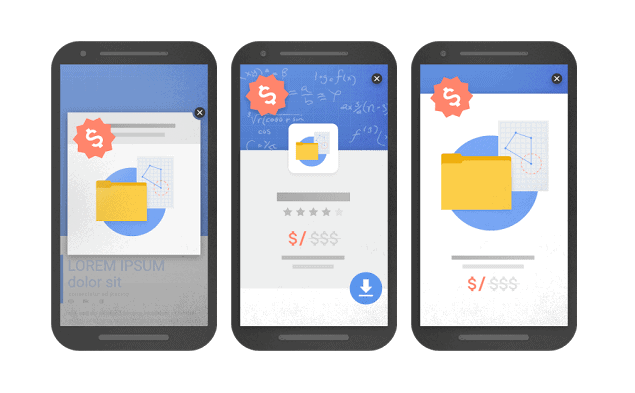You may have missed it, but at the end of August, search giant Google announced yet another big change is coming to SEO in the coming months. For our HTML5 UX web design universe, this one is big.
The Next Big SEO and UX Change
Google is continuing its push toward easier access to web content for mobile users and the next item on the chopping block is obtrusive popups. While we all probably hate the worst-of-the-worst popup offenders out there — the kind that tries to trick you into downloading malware and the like — many popups serve important legitimate business purposes.
Your conversions, sales, ebook downloads, mailing list signups, and more may rely on just the sort of popups Google wants to website owners to nix. And if you don’t do away with your offending popups, the search giant says your SEO ranking will be lowered.
To illustrate just how big an event this is, tech blog The Verge currently sits at the top of the SERPs for this news item and their article on the matter admits that their site would run afoul of the new requirements. Just what does Google define as good and bad when it comes to popups?
Google’s New Popup Rules
First, the bad news. From January 10, 2017, Google will reportedly lower the SEO ranking of websites “where content is not easily accessible.”
On a Google Webmasters blog post, the search giant identified three types of popups it doesn’t like:
- Popups that cover the main page content, and that either pops up right after the user arrives on the page or that appear later when they’re trying to look through the page content.
- So-called standalone interstitials — these are popups that act as a sort of bouncer you have to get past before you can see any of the page content, often requiring you to click a small “X” very precisely to close them out.
- And above-the-fold type calls to action or interstitials that take up most of the visible screen real estate, with the regular content appearing down below.
However, Google acknowledges that some such popups serve a purpose, and more importantly, that they won’t be affected by this SEO rankings change. This includes:
- Interstitials that ask visitors to acknowledge or respond to a legal requirement or obligation, such as the age verification popups required by US law for alcohol business websites.
- Login pages or dialog boxes for web pages with non-publicly indexed content, such as web-based email login pages or business sites with a paywall.
- Banner content that uses “a reasonable amount” of screen space and is “easily dismissible.” Google clarifies by citing Safari and Chrome’s app install banners as two sites using that “reasonable amount” of screen real estate.
The Impact for Businesses
While some readers out there may breathe a sigh of relief that their website falls into the “good” popup category, others will have realized their previously safe popups are now an endangered species.
This change will affect websites in two ways. SEO traffic dips — and thus lost site visitors and ad revenue — will be a concern for sites who maintain these popups after January 10, 2017. Plus, sites that rely on their current popups to drive conversions, sales, and engagements, will need to come up with a replacement strategy.
As far as the SEO rankings go, many businesses are likely to capitulate to Google’s demands. The Verge points out that most websites don’t always jump when the search giant tells them to, but the potential economic costs of inaction here makes a change worthwhile.
Plus, like many other big Google changes, we have an advance warning they’re coming. Google tends to do this “slow-moving disaster” rollout announcement frequently — with mobile friendliness, AMP content, expanded text ads — which turns these announcements into the best type of disasters — those we have time to turn into mere inconveniences.
As for onsite conversions, new methods of capturing user info and attention will have to be devised. This will likely be an individualized change for each affected website, with unique solutions that work for that site’s users but not other site’s users. Here, a good UX/UI team will be crucial to getting it right. Your team may need to conduct research and A/B testing before settling on a new way to maximize your conversion performance. This could take a bit of time, so the sooner you get started, the better.
Is your website ready for Google’s next SEO change? Call us at 313-338-9515 or email hello@kaleidico.com to learn how our full-service digital agency can help your site succeed in the new mobile web era.
